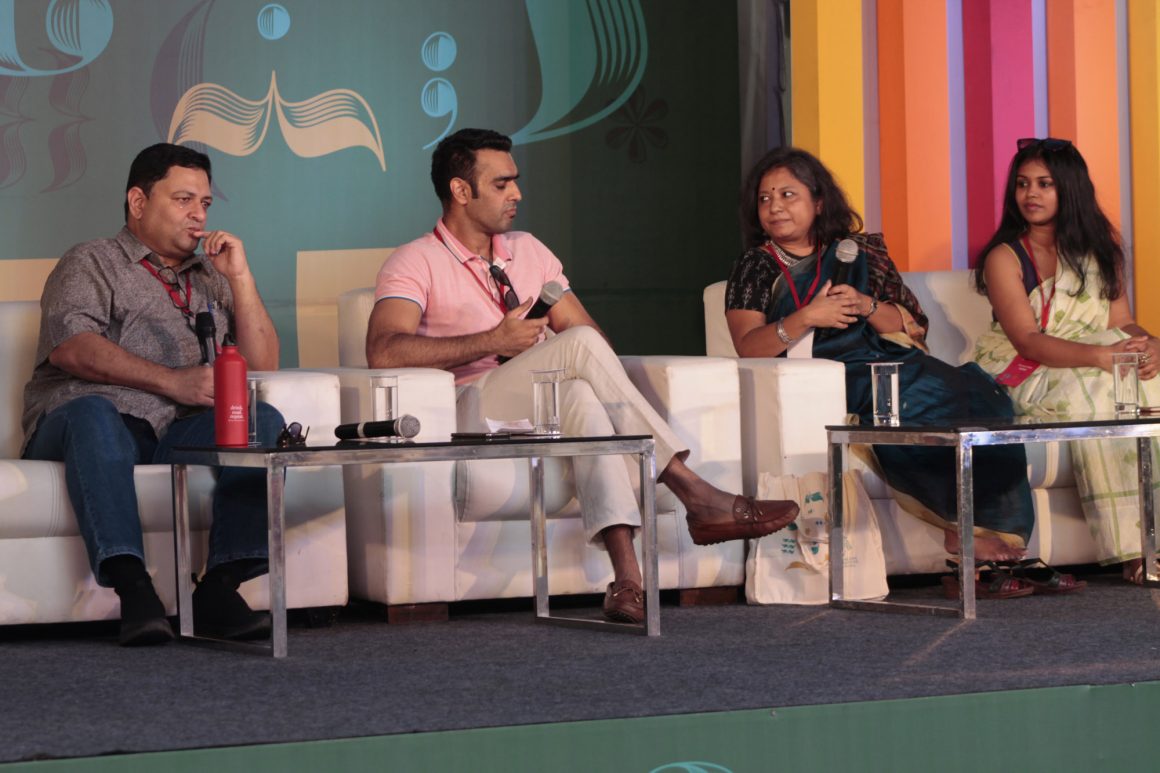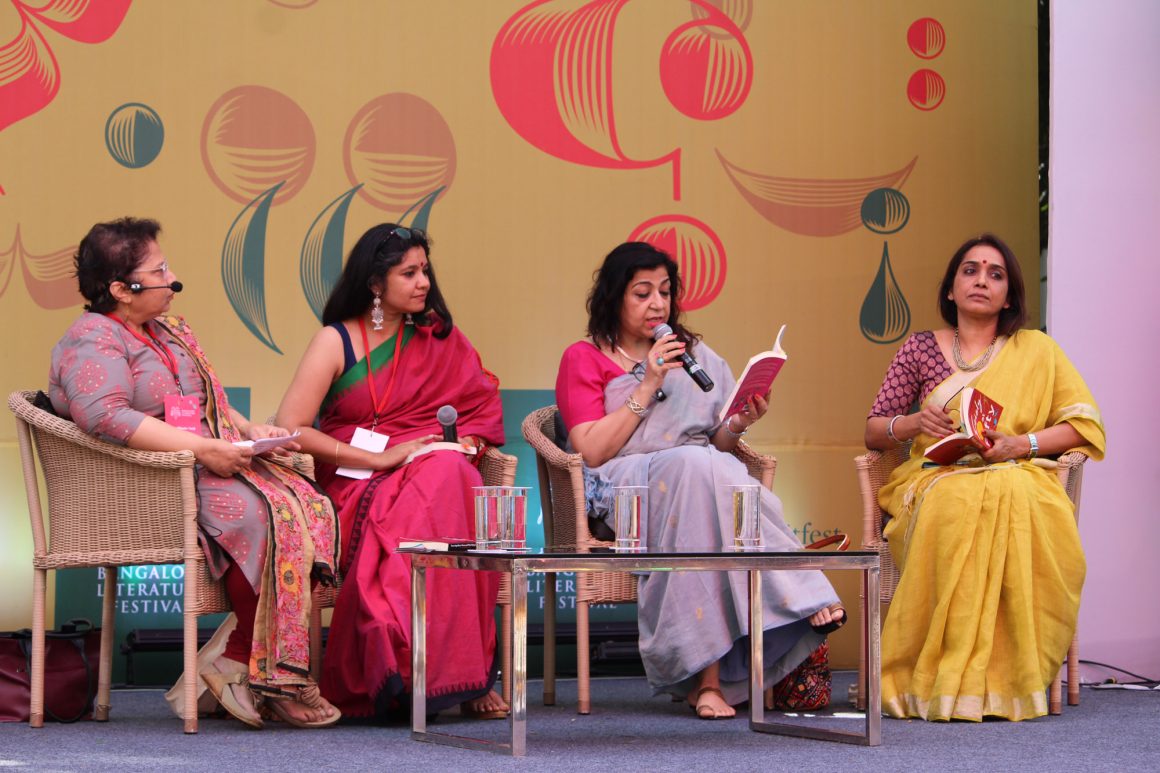The evening session driven by Abdullah Khan, a Mumbai based novelist, screenwriter, literary critic, and banker was one of the most engaging events of the day two of Bangalore Literature Festival. His discovery of George Orwell sharing origin to his birthplace Bihar, drew him to literature. With Abdullah on stage was Andaleeb Wajid, a Bangalore-based writer who has written on diverse topics like food, relationships, and weddings in a Muslim context. The other esteemed guests were Hussain Haidry, an Indian poet, writer and lyricist and Hem Borker, an assistant professor at the Centre for Social Exclusion and Inclusive policy, Jamia Millia Islamia, New Delhi.
The discourse began with the contextualization of the current widespread practice of stereotyping on the basis of various grounds like religion, region, caste etc. The debate was intense around the identity aspect and its corollary with respect to our country. Abdullah brought in references from Nelson Mandela’s vision to proceed the argument which mainly dealt with the explanation of who actually is an Indian Muslim in the contemporary India.
The power structure of Muslims facing the stereotypical bias from the country as a whole for being a minority was discussed. Andaleeb expressed her struggles over wearing veil (burkha) and exploring her right to choose the way she wishes to dress and make her personal choice. Hema brought in historical instances which paved a new school of thought about a secular country where everyone has equal rights to practice their own choice of religion.
The debate was carried forward by Hussain’s vision of Indian Muslim not just being a mere set of two words, instead a culmination of numerous identities. He narrated his poem “Hindustani Mussalman” to the audience which received a stellar response. He then put forward a series of questions after narrating his poem which was received with pin drop silence. The narration included controversial parts of the poem about Babri Masjid. He also spoke about being a Muslim and rejoicing the sacred bath in holy river Ganga.
The panelist then referred to the aspect of multi-identity in every Muslim. They cleared their stance that they are as Indian as any other citizen of the country. Abdullah drew the mistaken stereotype of most Indians assuming and associating Muslims to mere one section of the society. He gave his life experiences whereby he had to tell people that he has many layered identities besides being an Indian. He gave the example of Genghis Khan who is assumed to a Muslim because of his surname though he was a follower of Tengrism.
The panelists shared their life experiences and dwelled on the aspect of secularity in the country, overarching the central idea of Muslims as a community in India facing prejudice. The session ended on a very insightful discussion answering audience questions related to current events like the Babri Masjid verdict.
About the Author: Abhinav Kumar is an MA in English with Communication Studies student from CHRIST ( Deemed To Be University), Bengaluru who believes in “No matter what people tell you, words and ideas can change the world”. He is interested in sports journalism and travelogue writing. He currently writes for TheSeer.









